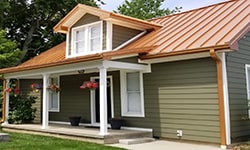- Free Consultation: (844) 268-7775 Tap Here to Call Us
Indiana Supreme Court Clarifies Indiana’s Firefighter’s Rule and Indiana’s First-Responder’s Rule in Personal Injury Claim
We previously blogged about Indiana’s firefighter’s rule in an Indiana Court of Appeals case, Dolsen v. VeoRide, Inc., wherein the Court of Appeals found the firefighter’s rule did not bar a firefighter’s negligence claim against a possessor of land. In Dolsen, firefighter Richard Dolsen, Jr. (“Dolsen”) was injured when he fell through an open wall into a stairwell at a building leased by VeoRide, Inc. (“VeoRide”), an electric scooter company. One of the batteries VeoRide stored in the building caught fire and when Dolsen entered the building, smoke and a lack of light in the building prevented him from seeing the open wall. While employees of VeoRide were notified of the fire, VeoRide did not provide any warning to Dolsen about the open wall in the building.
The Indiana Supreme Court accepted transfer of the case and clarified Indiana law with respect to Indiana’s firefighter’s rule and Indiana’s first-responder’s rule, with the Court holding they are two separate doctrines. Under Indiana’s firefighter’s rule, originating from Woodruff v. Bowen, 34 N.E. 113 (Ind. 1893), a landowner’s only duty to a firefighter who enters the premises to address a fire is to refrain from positive wrongful acts, with the firefighter treated as a licensee under premise liability principles. Indiana’s firefighter’s rule only applies to firefighters. Indiana’s first-responder’s rule, as set forth in Babes Showclub, Jaba, Inc. v. Lair, 918 N.E.2d 308 (Ind. 2009), applies to both firefighters and other first responders and prevents them from recovering damages based upon negligence that caused the emergency to which they responded when injured.
In analyzing Dolsen’s claims against VeoRide, the Indiana Supreme Court first found that Indiana’s first-responder’s rule does not bar Dolsen’s claims. Dolsen claimed VeoRide was negligent, thus causing his fall, for failing to fix the open wall in the building and for failing to warn him of the danger of the open wall, neither of which were based upon any negligence related to the cause of the fire (the battery). The Court noted that Indiana’s first-responder’s rule was created as a limitation to Indiana’s rescue doctrine, which sets forth the circumstances under which a person needing to be rescued because of his or her own negligence might be liable to the person providing rescue. With the first-responder’s rule, while a person being rescued may potentially be liable to non-professional, spur-of-the-moment rescuers acting voluntarily to help, for negligence causing the emergency itself, no such liability exists with respect to first responders. The Court also noted that contributing factors in the cause of an injury, for example here, the smoke from the fire, were irrelevant, as the “key question” is whether the alleged negligence caused the emergency. As noted by the Court, under the first-responder’s rule, courts look to the act or omission the plaintiff claims was negligent and not whether the emergency contributed to the cause of the injury.
As for Indiana’s firefighter’s rule, the Indiana Supreme Court found genuine issues of material fact existed as to whether VeoRide breached its duty to Dolsen under the firefighter’s rule. Under the firefighter’s rule, Dolsen was a licensee, and therefore, VeoRide owed him (1) a duty not to willfully or wantonly injure him or act in a manner increasing his peril and (2) a duty to warn him of any latent (non-obvious) danger on the premises of which it had knowledge. As to the duties of a landowner, the Court also noted that while statutes can create duties owed to licensees, landowners need only comply with those designed to protect firefighters, and landowners owe no duty to anticipate extraordinary circumstances and make premises safe for firefighting purposes.
Here, the Court found genuine issues of material fact as to (1) whether the potential danger of the open wall was obvious to VeoRide, thereby making its failure to fix it a willful or wanton act, and (2) whether VeoRide should have known the danger was hidden to Dolsen when the building was filled with smoke and when there was no light in the building, such that VeoRide was required to warn Dolsen. To prove a willful and wanton act, a claimant must show a defendant knew of a particular risk to the claimant and disregarded it. As to this claim, the Court found disputed evidence as to VeoRide’s knowledge of the potential danger of the open wall, noting a seemingly obvious danger while at the same time the lack of any prior injuries and VeoRide not having knowledge of any prior code violations. As to the lack of warning claim, the Court found disputed evidence as to whether the open wall was a latent danger (concealed or dormant) of which VeoRide was aware. While the open wall was obvious with light, factual questions remained as to why the lights were off, whether VeoRide knew the lights were off, and whether Dolsen could have seen the open wall, despite the darkness and smoke, by using a flashlight or other means. Ultimately, the Court found the trial court erred in granting summary judgment in favor of VeoRide, reversed the trial court, and remanded the case for further proceedings consistent with its opinion.
You can read the full opinion here.
















